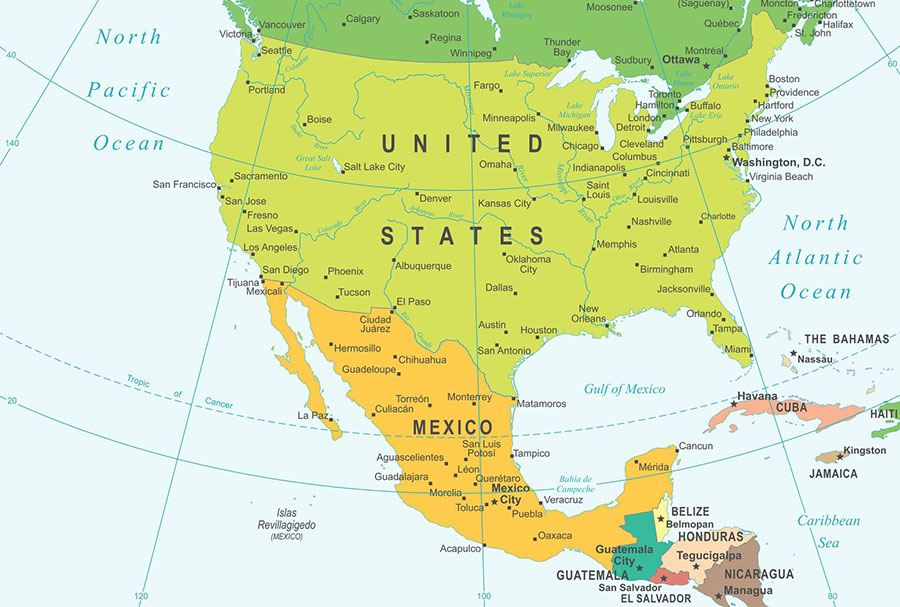China’s Outbound Investment Into ASEAN Compared With US Investment into Mexico and Central America
Showcasing China’s desire to develop bilateral trade via the BRI against the US desire to reduce migration and boost exports. The B3W is a very different animal to the Belt and Road Initiative.
The United States ‘Build Back Better World‘ (B3W) program has hit political stumbling blocks with various Senators questioning the amounts of capital being earmarked to fund American infrastructure, putting into serious doubt similar intentions in overseas third-party nations. The White House issued a Briefing earlier this month stating that the program would go ahead, however it seems increasing uncertain where the funding will materialize from. With opposition to spending US$1.7 trillion on its own infrastructure, getting funding into what the White House calls “a better alternative through transparent, sustainable financing that responds to low- and middle-income countries’ needs and upholds high labor and environmental standards, while allowing societies in low – and middle-income countries to prosper” is looking increasingly like a pipe dream.
United States investment into its own backyard into Mexico and Central America – Guatemala, El Salvador, Honduras, Nicaragua, Costa Rica, Panama, and Belize has been patchy. U.S. foreign direct investment into Mexico was $100.9 billion in 2019 but fell nearly 90% in 2020 to just $11.6 billion. U.S. direct investment in Mexico is led by manufacturing, finance and insurance, and nonbank holding companies. Bilateral trade has reached $614.5 billion, and the country remains an important trade partner for the United States.
Beyond Mexico however, and into Central America, this figure is considerably smaller, with Guatemala leading the way with $17.3 billion followed by Panama with $4.6 billion. The remaining five Central American states collectively realized just $6 billion of US investment. In terms of bilateral trade. The US has a Free Trade Agreement with five of the Central American economies together with the Dominican Republic, realizing $57.4 billion in bilateral trade in 2018. Overall trade volumes for the region however have declined the past four years, although a recovery for 2021 is apparent. However, the main focus of US investment into Central America appears to be based not on a policy of improving infrastructure, but rather suppressing immigration from the region to the United States. U.S. Vice President Kamala Harris announced a $1.2 billion in private sector investment in Central America earlier this month as part of a program aimed at reducing migration from the region.

This is in direct contrast to China’s Belt and Road Initiative policy, which is designed to improve infrastructure and to increase the bilateral flow of trade, without impeding cross-border migration. A very recent example is the opening of the China-Laos railway. Laos is one of China’s poorest neighbors, with a population of 7.3 million, an actual GDP of $20.15 billion and a GDP per capita of $2,670. China has invested $16 billion into Laos, with the railway itself a $1 billion project, while bilateral trade, split evenly, hit $3.75 billion in 2019. That is set to boom with the new railway.
China invested $9.1 billion in ASEAN in 2020, slightly less than the US investment into Mexico but rather more than the US invested in Central America. China-ASEAN bilateral trade in 2020 hit $685 billion, more than US trade with Mexico and Central America combined. This is also an upward trend whereas US trade is declining in its backyard.
Laos as a country is comparable in size to El Salvador, with a population of 6.8 million, an actual GDP of $25.85 billion and a GDP per capita of $4,041. It is a wealthier country than Laos. Yet the United States foreign policy towards it has been far different from China’s approach – US FDI into El Salvador was $3 billion in 2019, however, the United States Trade Representative has no record on what this money was spent on, and there are no projects to show for this finance. That is a lack of the transparency that the US promises with B3W. Bilateral trade meanwhile is in favor of the United States, which posted a surplus of $889 million in 2019. Meanwhile, US investment is geared to keeping El Salvadorans away from the United States borders. Part of the new White House initiative is $150 million from Kamala Harris is to expand support for farmers in El Salvador – not provide connectivity infrastructure, but to keep them home. Coca-Cola is also building a manufacturing plant as part of the $1.2 billion investment, but this is really to sell more US products, not develop infrastructure or assist with national reconstruction. China’s BRI in contrast is designed partially to sustain its domestic consumption, and not just boost Chinese exports. It is a two-way, rather than a one-way street.
The differences therefore between the US B3W and China’s BRI begin to make themselves known. The B3W is partially aimed at curbing immigration, increasing US exports and is exclusive; the BRI is inclusive and aimed at mutually increasing beneficial trade, and is why countries within Central and South America are turning to China, and not the United States to boost investment and their domestic exports. The B3W has a solely US, rather than bilateral, trade bias and is far from comparable to the Belt and Road initiative.
Related Reading
About Us
Chris Devonshire-Ellis is the Chairman of Dezan Shira & Associates. The firm assists British and Foreign Investment into Asia and has 28 offices throughout China, India, the ASEAN nations and Russia. For strategic and business intelligence concerning China’s Belt & Road Initiative please email silkroad@dezshira.com or visit us at www.dezshira.com





